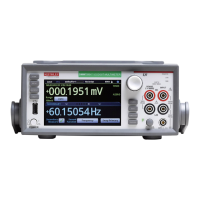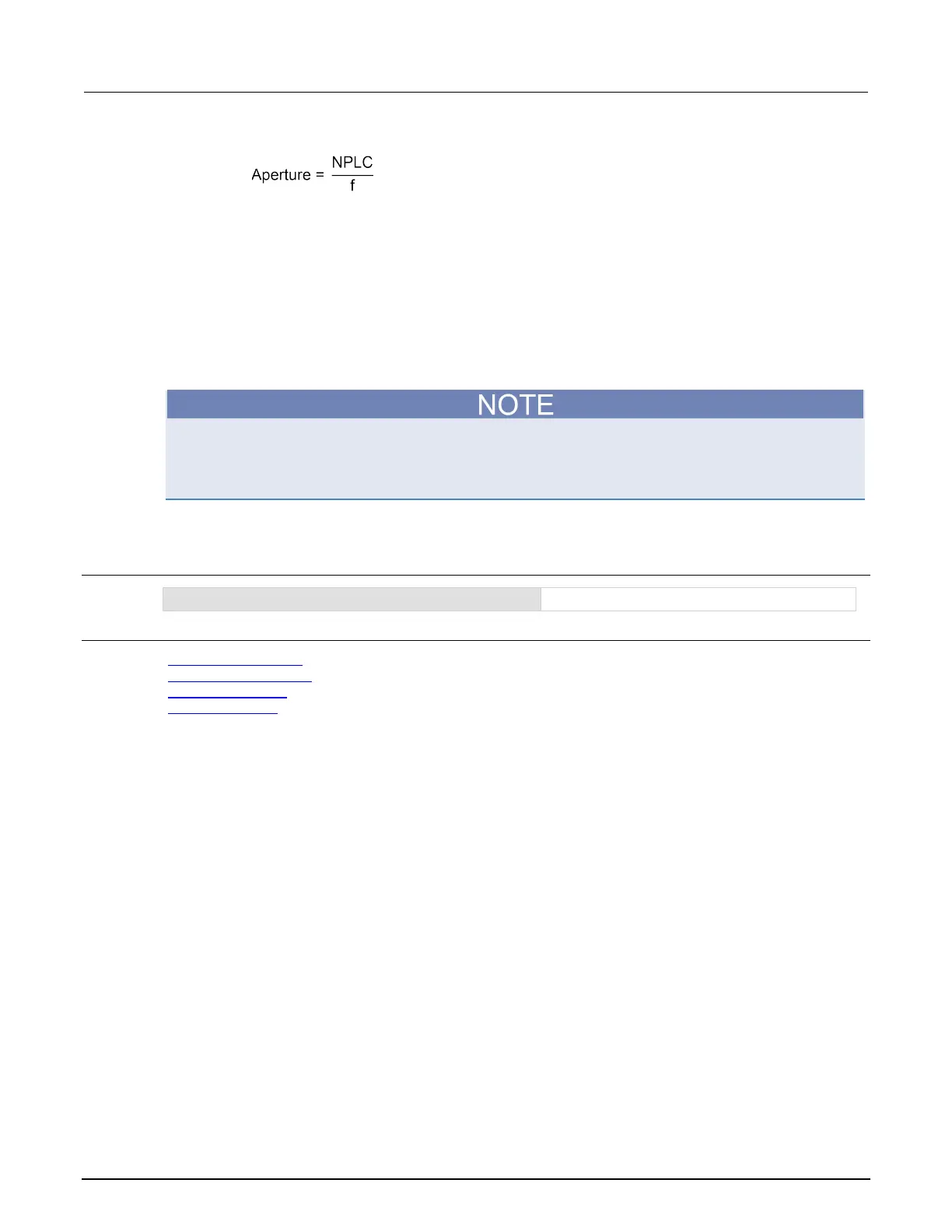8: TSP command reference Model DMM7510 7½ Digit Graphical Sampling Multimeter
8-132 DMM7510-901-01 Rev. B / May 2015
To calculate the aperture based on the NPLC value, use the following formula.
where:
• Aperture is the integration rate in seconds for each integration
• NPLC is the number of power line cycles for each integration
• f is the power line frequency
If you set the NPLCs, the aperture setting changes to reflect that value. If you set the aperture, the
NPLC setting is changed.
For the AC voltage and AC current functions, if the detector bandwidth setting is set to 3 Hz or 30 Hz,
the aperture value is fixed and cannot be changed.
If line synchronization is enabled, the integration period does not start until the beginning of the next
power line cycle. For example, if a reading is triggered at the positive peak of a power line cycle, the
integration period does not start until that power line cycle is completed. The integration period starts
when the positive-going sine wave crosses zero volts.
To see the line frequency that is auto-detected by the instrument, use the localnode.linefreq
command.
Example
dmm.measure.aperture = 0.0035
Set the aperture to 3.5 ms
Also see
dmm.digitize.aperture (on page 8-83)
dmm.measure.linesync (on page 8-166)
dmm.measure.nplc (on page 8-172)
localnode.linefreq (on page 8-222)

